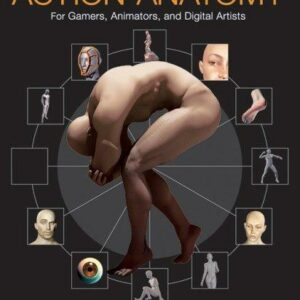Pagan Holiday
$18.00
| Title | Range | Discount |
|---|---|---|
| Trade Discount | 5 + | 25% |
- Description
- Additional information
Description
The ancient Romans were responsible for many remarkable achievements—Roman numerals, straight roads—but one of their lesser-known contributions was the creation of the tourist industry. The first people in history to enjoy safe and easy travel, Romans embarked on the original Grand Tour, journeying from the lost city of Troy to the Acropolis, from the Colossus at Rhodes to Egypt, for the obligatory Nile cruise to the very edge of the empire. And, as Tony Perrottet discovers, the popularity of this route has only increased with time.
Intrigued by the possibility of re-creating the tour, Perrottet, accompanied by his pregnant girlfriend, sets off to discover life as an ancient Roman. The result is this lively blend of fascinating historical anecdotes and hilarious personal encounters, interspersed with irreverent and often eerily prescient quotes from the ancients—a vivid portrait of the Roman Empire in all its complexity and wonder.“Perrottet is a nearly unflappable traveler and a terrifically funny writer; this history-cum-travelogue is as enjoyable as it is informative and twice as quirky.” —The Boston Globe
“An appealing…mix of the zany and the arcane, juggling an energetic account of ancient Roman travel habits with a witty record of [the author’s] own modern journey.” —The New York Times
“Required reading…a charming popular history of ancient Roman sight-seeing.” —Forbes FYI
“A splendid trip…a whimsical trek through classical history, famous sites and arcane trivia…provides a rich cache of information about ancient Roman life.” —The Washington PostTony Perrottet has written for The New York Times, Esquire, Outside, Civilization, Islands, and The Sunday Times (London), among other publications. He is Australian and lives in Manhattan with his wife and son.Chapter 1
Jupiter’s Panorama
It must have been like a film premiere at Cannes. Throngs of excited spectators filed their way into the heart of Rome, shamelessly ogling the latest fashions and pointing out the celebrities in their midst. An impatient crowd was soon milling outside the venue-an elegant, column-lined arcade called the Vipsania Colonnade, expressly built as a sort of open-air art gallery-where a sensational new opus was about to be unveiled. White-robed priests were busy sacrificing animals to guarantee the ongoing favor of the gods. Choruses of youths sang patriotic anthems. Silver fountains burbled in nearby gardens, while food vendors and beggars noisily worked the crowd. At last, this colorful audience of ancient Romans-everyone from perfumed aristocrats in their silk gowns and brilliant togas to impoverished slum dwellers in their grimy tunics-jostled to the foreground, all trying to have their observations heard above the cacophony.
Looming above them was a dazzling spectacle-a map of the world as large as a drive-in movie screen, showing the three known continents, Europe, Africa, and Asia.
Two thousand years later, it’s easy to imagine the frisson of that heady scene-especially if you happen to be, as I was, piecing it together in the fabulous halls of the New York Public Library in midtown Manhattan, a modern-day Roman temple whose interior gleams with marble and ceilings swarm with depictions of the pagan gods. I’d fled there to escape the first heat wave of summer-steam was rising from the sidewalks like the fumes from Hades-and besides, New York reality was starting to close in on me, in more ways than one. But in that silent refuge, surrounded by piles of musty, leather-bound volumes, I found myself easily transported back to that moment in Imperial Rome, circa 5 b.c., when the world’s horizons suddenly opened.
Few ancient citizens had even seen a street map before that day, let alone a chart of such divine ambition. The image would have been as futuristic then as the first satellite photos from NASA.
Exhaustive research for the map had been orchestrated by a man named Marcus Agrippa-a Roman war hero who must qualify as one of the great anal retentives of history. In order to measure the world’s dimensions, Agrippa had summoned the leading scientists to Rome and provided them with archives full of field coordinates accumulated by the Imperial Army. An elite corps of land surveyors was dispatched to plot every uncharted corner of Rome’s domain; in addition, the captain of every ship was required to file charts of the coastlines he had navigated. This new geographical database was then applied to the accepted mythological model of the earth. (Ancient geographers knew the world was round, but believed that terra firma occupied only the northern hemisphere, and was surrounded by the uncrossable river ocean.)
The result was, not surprisingly, a map of unprecedented accuracy.
The emperor Augustus was presented with a miniature version for his palace; it was engraved in solid gold, with the provincial capitals marked by precious gems. But it was the monolithic image erected in the public colonnade that was the true triumph of Roman ingenuity. Sadly, not a single scrap has survived, although the tantalizing remarks of Latin authors allow us to speculate that it stretched sixty feet along the arcade and rose to thirty feet in height. The details may have been applied in pigment, but quite possibly it was one of the fabulous "paintings in stone" then fashionable in Rome-an interlocking pattern of polished marble, amethyst, and alabaster, with each piece carved in topographical relief by Greek craftsmen.
To the crowd gathered in the colonnade that day, nothing could have been more enlightening.
For a start, Romans discovered that the land masses of the earth together formed an oval shape. The three continents, Europe, Africa, and Asia, all clustered around the Mediterranean-which was then a Latin lake, identified simply as Mare Nostrum (our sea). In fact, Roman hearts must have swelled with pride to see the sheer size of Caesar’s domain: The imperial eagles flew all the way from the Pillars of Hercules (Gibraltar) to the seven mouths of the Nile.
Rome had been chosen by the gods to rule over all of creation. One glance at Agrippa’s Map (as it was known) proved that the task was largely complete.
Despite its distortions-remote lands like India were drawn largely from hearsay, while the frontiers were roamed by legendary Amazons, Troglodytes, and Lice-Eaters-the Map marked a revolution in the Western perception of the world. Carved onto that sprawling stone canvas was every known river, every mountain range, every port, and every city (one Roman pedant consulting it in a.d. 70 was even able to identify an obscure provincial outpost named Charax, a mile and a quarter from the Persian Gulf). But what made the image strikingly modern-and truly compelling for that Roman audience-was its practical application. The Empire’s glorious highway system-Rome’s pride and joy-was chiseled across its surface, the routes spreading like hardened arteries to the farthest corners of civilization. Major sea lanes could be identified, crisscrossing the Mediterranean blue. And just for good measure, the showboating general Agrippa had written a geographical commentary to accompany his masterwork, with the entire voluminous text inscribed on marble tablets along the nearby walls of the arcade. A library of facts and figures was now placed at citizens’ disposal-handy data like the lengths of important rivers (Danube: 560 Roman miles), the physical dimensions of provinces (Illyria: 325 by 530 miles), circumferences of prominent islands (Sicily: 618 miles), and the distances between cities.
For the first time in history, a population had the world laid out before it like a buffet. Not only could viewers locate a famous site-the Colossus of Rhodes, say, or the ruins of Troy-but they could determine its exact distance from Rome and the best travel route to reach it.
And with every inch of the route under Caesar’s protection, the Map’s message was clear: The world was the Romans’ oyster. Plan your holiday now.
The first age of tourism had begun.
ROMANS ON THE ROAD
Ensconced in the library, with a mountain of arcane texts piling around me, I delved more deeply into the ancient travel bug. And in fact, for centuries after Agrippa’s Map was unveiled, legions of Romans were inspired to follow its exotic allure. The most surprising thing was how familiar their journeys were: As their memoirs, plays, and letters home revealed, these trailblazing sightseers sought out many of the same attractions, enjoyed many of the same pleasures-and suffered many of the same indignities-as modern travelers do today.
Across the entire Mediterranean world, an elaborate tourist infrastructure, anticipating our contemporary version, emerged to cater to the Romans’ distinctive needs. They stayed at roadside inns, complained about hard mattresses and bad service, ate at dubious restaurants, got drunk in smoke-filled taverns, and wrote poems about their hangovers. The ancient sightseers visited lavish temples-the equivalent of our modern museums, crowded with wondrous artifacts-and handed over hefty donations to shyster priests for a glimpse of a Gorgon’s hair, a Cyclops’ skull, or Ulysses’ sword. Just like us, they sought out celebrated historic landmarks like the Parthenon and the Pyramids. But inspiring far more enthusiasm from these ancient wanderers were the sites of mythic lore-the spot where the god Jupiter had come to earth, Venus had bewitched a mortal, or the hero Achilles had killed Hector in the Iliad.
The parallels became even more striking within the tourist enclaves, I discovered. Clustering around these growing tourist attractions were hordes of professional tour guides-called mystagogi (those who show sacred places to foreigners)-and it seems that the Romans were just as exasperated by their endless prattle as we are today. ("Jupiter, protect me from your guides at Olympia!" prayed a roving academic named Varro, "and you, Athena, from yours at Athens!") The pioneering tourists bought cheesy souvenirs wherever they went, such as painted glass vials showing the Lighthouse of Alexandria or miniature statues of Apollo, and they commissioned portraits by local artists, with famous sites in the background. They pored over guidebooks written on papyrus scrolls, and even etched graffiti onto their favorite monuments. It’s still there, alongside more recent efforts such as brig-general maugham 1820 and harry potter rules 2001. (The erudite ancients often preferred to inscribe Homeric verse, although the most popular shorthand scrawl was the rhapsodic i was amazed.)
And the Romans gladly paid for a good floor show. Crowd-pleasing Egyptian priests kept crocodiles in a pond and at scheduled times fed them morsels of flesh, squirted wine into their mouths, and then hand-polished their sharp teeth. Spartans showed off their macho prowess,
sorcerers conjured, oracles pronounced. In Aswan, Egypt, enterprising boatmen took tourists on rides along the Nile, rather as they do today-if the price was right.
As for the reviews, many of the ancient travel experiences echo down the ages-particularly one Roman traveler’s comment about the locals of Alexandria: Unus illis deus Nummus est. "They worship only one god there-Cash!"
And just like today, the irritations of the road were forgotten on the return home. The happy voyagers would then boast about their trips at banquets, show off their art and souvenirs-and so inspire still more eager sightseers to explore a world saturated by magic and myth.
As for me, I had my own dark reasons to catch that ancient travel bug.
By the time I was on the subway back downtown that night, I was carrying a modern version of Agrippa’s Map, with a thin red line scrawled from Rome to Egypt’s frontier.
It was time to revive a great tradition.
The Pompeii
McDonald’s
Scusi," my girlfriend, Lesley, was asking anyone who would listen, "where are the penises?"
A valid question in many situations, no doubt, and here in the back alleys of Pompeii, it was being urgently repeated in every known language.
"Los penes?"
"Die Pimmel?"
"Les baïonettes?"
Soon there were dozens of us scouring the walls for ancient etchings of male genitalia, which had once directed drunken sailors to the local brothels. It’s now a key ritual for visitors to this fabled Roman port, which was buried under volcanic ash in a.d. 79, and I wasn’t going to miss out. Dazed by summer heat, Les and I had already inspected the famous plaster casts of petrified Pompeiians who’d died with expressions of agony and disbelief. We’d wandered the chariot-rutted avenues and admired the fresco-covered villas of gluttonous millionaires. Now we were following the phallic trail into a dark, cramped "wolf house," where above each narrow bed stall a crude painting still survived, of prostitutes graphically advertising their repertoires.
"Sessantanove," explained the old Italian guard gleefully. "You understand? Sixty-nine!"
The pagan ghosts were putting on quite a show. But somehow, vivid as it all should have been, the ancient magic felt strangely elusive to me.
Pompeii, it hardly needs saying, is today’s prime destination for anyone even vaguely interested in communing with the Romans, which is why we’d come here on a day trip as soon as we’d arrived in Italy. In fact, its discovery had single-handedly reshaped the modern fascination with antiquity. Before excavations began here in 1748, scholars paid attention only to the Empire’s dead white-toga males-all those generals, senators, and poets who ended up as busts in dusty museums. But when Pompeii was uncovered, we were introduced to the far more compelling human details: the Romans’ cuisine, décor, hairstyles, perfumes, winemaking, dentistry, sex lives (especially the latter-an undying point of human empathy). Nineteenth-century painters conjured scenes from Roman life based on Pompeiian artifacts, all redolent of decadent sensuality; later, Hollywood took up the banner, in immortal epics such as Ben-Hur, Quo Vadis, and Gladiator.
With actual Romans frozen in such excruciatingly recognizable situations, Pompeii is still celebrated as that thrilling place where time dissolves-an open doorway onto the past, where one can gaze upon the classical world, unmediated and direct.
There was only one problem-and it seemed a quintessentially modern one: the hordes.
Tour groups from every nation on earth were storming down the cobbled streets, their guides waving yellow flags like military mascots and bellowing facts in a babel of tongues. Each time we paused at something of interest, another group would charge toward us, pointing frantically, cameras whirring. Pompeii is Italy’s most popular attraction, bigger than Venice’s Grand Canal, the Leaning Tower of Pisa, or Michelangelo’s David. It receives over two million visitors a year, making it feel less like an archaeological site and more like Pompeii World.
Even the lecherous old brothel guard had to keep the human tide moving.
"Signori-out!" he crisply ordered. "Koreans-in!"
Tourism itself has come a long way since the unveiling of Agrippa’s Map. It is now officially the world’s biggest industry-and the Mediterranean world is still squarely on the front line. At Pompeii, I almost wanted Vesuvius to erupt again, just to freeze in time the mad vignettes-
from the twenty-eight air-conditioned coaches lined up by the wire fence ("We’ll beat the crowds," I’d predicted) to the virtual riot in the ticket lines (a dozen different currencies were accepted, so arguments over the exchange rates had ground progress to a standstill). Once inside the site, every nation indulged its foibles. There were the drunken Aussies playing rugby in the Roman arena. The French matrons in the amphitheater, testing the acoustics with a rondel of "Frère Jacques." The Japanese mysteriously posing for photos in front of stray dogs. The terrifying German guides bellowing "Achtung! Raus!" Not to mention a Pasolini-esque Italian guide, silk jacket hanging debonairly over his shoulders, somehow separated from his group. Unruffled, he was wandering the crowds singing: "Where are my children? I have lost my angels, my children."
Les was doing a sterling job at rising above the hysteria. She valiantly joined the fray, briskly leading the brothel hunt, head down, elbows out.
By the way, Les happened to be three months pregnant. I could only put this uncharacteristic Zen temperament-this newfound ability to ignore crowds-down to her new condition.
As for me, the chaos was stealing from my longed-for Pompeii all its vaunted imaginative power. I was feeling no closer to the ancients here than when I looked at their statues in museums, cold marble busts with eyes hollow and blank, and not a shred of personality.
Of course, I’d expected the Mediterranean to be popular, particularly in summer-but the reality was still a shock. The ancients were simply part of a production line whose gears were deafening.
For hour after hour, Pompeii-O-Rama ground on. And then, in midafternoon-just when I thought things couldn’t get much worse-Les had a hunger attack.
"I want something’s flesh!" she announced-one of her million movie lines.
This was the last straw. We were at the farthest end of a vast site, miles from any museum café. Was there some sort of conspiracy against me? I feverishly wondered. Was this whole trip a dreadful mistake? Of course, one of the few things I’d actually learned so far about being pregnant is that getting something to eat-fast-is a nonnegotiable demand.
"No, no," the guard warned sternly, as we stood uncertainly at the back exit, gazing at what appeared to be a modern street-if an unusually desolate one.
"If you go there"-he swept his arm like a guardian of the underworld-"you can not come back."
And yet, we went-onward, into the shadowy netherworld of New Pompeii.
New Pompeii is the depressed town that lurks on the fringes of its ancient namesake, referred to only in hushed whispers like some mad and unsavory relative locked in the belfry. Its populace has provided the Roman ruin with guards and laborers since the site was discovered 250 years ago, but ancient Pompeii’s popularity has not rubbed off. Corrupt and crime-ridden, New Pompeii’s existence is not even mentioned in most guidebooks.
To be honest, as we slunk through the sepulchral streets, I could understand why. It was 4 p.m., and the town looked like an abandoned back lot for a spaghetti Western.
Coming so recently from New York, we found the all-powerful Italian siesta still a source of minor culture shock. Needless to say, all the restaurants in town were firmly shuttered. Waiters peered out at us as if we were dangerously insane-foreign junkies, perhaps, dragging themselves out of the gutter for an angry fix. We could have espresso, by all means; gelato by the tub load; even whole baskets of gift-wrapped biscotti. But as for real food, as Lesley demanded-impossible.
We stumbled on under the merciless sun, past restaurants named Vesuvio, Amphora, Apollo-closed, closed, every place closed-until we both sighted the golden arches of the Pompeii McDonald’s.
It was open. I hadn’t passed beneath the yellow M for fifteen years, but Ronald’s nose was shining like the Holy Grail.
Heat-struck but trying to maintain our dignity, we took a plastic booth beside some wax plants and stared up at the glowing menu. I felt that familiar mixture of relief and sinking gloom. Resorting to the Pompeii McDonald’s symbolized my defeat as a traveler-on a par with staying at the Hilton in Katmandu. But Lesley was doing her best to convince me that the place had a certain surreal charm. For a start, this was clearly the most happening place in town. La trattoria americana was full of teenage Pompeiians, all in pastel designer jeans, hanging out for possibly the same reasons we were: It was cheap. It was air-conditioned. It had food.
"They even have antipasto," Les marveled.
Soon enough, in the spirit of New Pompeii, I was chomping on a delicate filetto di pesce and waiting for Les to return from what she would triumphantly declare "the cleanest toilets in Italy." Up on a giant video screen, a hypnotic music clip began playing. Local rockers were dressed up as Roman gladiators. One minute they were stomping across the deck of a sea galley; the next they were riding the winged horse Pegasus across the sky.
If you couldn’t get some historical perspective in the Pompeii McDonald’s, I thought, where could you?
It slowly began to dawn on me that the ancient world survived in strange and subtle ways.
WHEN WORLDS COLLIDE
Nobody admits to being a tourist these days; it’s considered a humiliating, even shameful state (as Evelyn Waugh put it: "The tourist is always the other chap"). And admittedly, seen from up close, the mechanics of the industry can be pretty appalling.
But from a wider perspective-beneath its boisterous veneer-mass tourism today is the purest expression of the tradition that began when Agrippa’s Map stood in Imperial Rome.
For those first tourists, the whole point of travel was to go where everyone else was going-to see what everyone else was seeing, to feel what everyone else was feeling. There was a virtual checklist of tourist attractions as well as an appropriate response to them. Sight-seeing was a form of pilgrimage.
It’s a modern notion of travel to seek out unique and private visions of the world-to be the first to climb the Matterhorn, the only foreigner in Timbuktu. To have mind-blowing adventures, life-altering encounters. To drive across America on recreational drugs with Neil Cassady at the wheel. On returning home, the heroic modern traveler, like some pumped-up porn star, likes to boast of going farther, harder, deeper. Original experience is worn like a badge of honor.
But that initial, ancient impulse to share the accepted wonders of the world has never actually been abandoned, even by those of us who would rather be buried under burning ash than join a bus tour of the Mediterranean. It’s an underlying point of connection between the ancient Romans and every traveler wandering the region today. The difference is that those first sightseers accepted the logic of their situation. They were never put off by being part of a crowd. In fact, a certain level of hubbub was an expected part of the project.
As the philosopher Epictetus said of the Olympic Games, the site was jam-packed, hot, noisy, and uncomfortable-but that was a small price to pay for an "unforgettable spectacle."
This had been my mistake! There, among fifty thousand other tourists, the realization hit me with a joyful delirium. Why should I let the multitudes bother me? On the contrary! I embraced them!
To paraphrase Mark Twain in The Innocents Abroad: I basked in the happiness of, for once in my life, drifting with the tide of a great popular movement.
Everyone was going to Europe-I too was going to Europe! Everyone was going across the Eastern Mediterranean! I too was going across the Eastern Mediterranean!
By the time Les rejoined me, I had achieved my own version of Zen calm.
I, Spectator
Tourism is a delicate flower that needs a certain degree of political and economic stability to thrive, and the halcyon days of the Pax Romana-roughly 30 b.c. to a.d. 200-is the longest unbroken period of peace that Europe has ever managed. In fact, the first two centuries a.d. form one of Western culture’s rare windows of calm-an interlude, in retrospect, of ghostly serenity. Safe transit around the Mediterranean was a unique dividend, and Romans came to accept it as their birthright. In fact, around a.d. 140, when a celebrated orator named Aelius Aristides announced with Panglossian assurance that humankind was enjoying "the best and most perfect times that ever were," he stressed that the ease of travel was one of Rome’s greatest triumphs.
"Cannot every man go wherever he wishes, without fear?" he floridly mused. "Aren’t all our harbors busy? Aren’t the mountains just as safe as the cities? There are no rivers that have not been bridged, no ocean gulfs that cannot be crossed. Even the sandy road to Egypt presents no obstacles; no terrifying mountain pass, no torrents or savages block the way.
"Homer once prayed: ‘The world should be open to all men.’ That wish is now realized. To be the Emperor’s subject-to be a Roman-is the only passport one needs."
Aristides happily noted that piracy had been stamped out. Highway robbery was rare; barbarian incursions unthought of; civil disturbance all but nonexistent. He went on to suggest, rather less convincingly, that life under Rome was so good that its subjects did not even mind paying taxes.
In some respects, travel has not been so easy since. With the entire Mediterranean politically united for the first-and, so far in history, only-time, citizens had no need to carry documents. The imperial currency (gold aurei and silver sestertii and denarii) was standard in lands the Euro has yet to penetrate, from the deserts of Morocco to the border villages in Iraq. Conveniently, the Empire had two common languages: Latin prevailed in the west, Greek in the east. Educated citizens were bilingual and could discuss a dinner menu as easily in Spain as in Syria.
And the sheer volume of Roman viatores, or peregrinatores (wayfarers), would not be equaled until the modern era. The Empire’s great highways, which formed a granite ring road around the entire Mediterranean coast, were in constant use, their stones worn and rutted by the ceaseless passage of iron wheels. The waves were just as busy: "Look at the sea covered with ships!" marveled one author. "There are more men afloat these days than ashore!" Students traveled to famous academies; patients journeyed to health spas; artists were in perpetual motion, seeking out commissions. Celebrity orators like Aristides went on long lecture tours, their performances as wildly popular as those of Wilde and Dickens in the nineteenth-century United States. Athletes flocked to competitions, actors to theater festivals, poets to readings.
But the most distinctive growth was in travel simply for the sake of seeing-tourism. For the first time in history, sheer pleasure became a worthy motive of travel.
THE SOPHISTICATED WAYFARER
To visit sumptuous temples full of treasures and relics, we brave the dangers of land and sea. Greedily seeking the tales of early legend, we travel through every nation . . . happily reliving ancient times, gazing at stones which moved great artists to song and string.
Aetna, anonymous Roman poem, first century a.d.
The quest for the marvelous was taken up by Romans as soon as they had the opportunity, and is entirely recognizable to us today.
"Many of us endure all sorts of hardships," intoned the philosopher Seneca in the middle of the first century a.d., "to behold some remote sight. For Nature made us born admirers; her jewels would be lost without an audience." Romans had become both "migratory and curious," noted the scholar Pliny the Younger, setting out en masse to explore their vast domain. And when the author Plutarch remarked with some bemusement on "globe-trotters who spend the best part of their lives in inns and on boats"-gadabouts who continuously "traverse unknown cities, sail new seas, but are at home everywhere"-I felt more than a twinge of familiarity.
Of course, modern travel is a notoriously democratic pursuit, at least within the industrialized world, first experienced most often by near-penniless backpackers. I’d taken my own initial trips during breaks from college, hitchhiking for weeks at a time with a twenty-dollar Woolworth’s tent. Those original Roman tourists were often young-in their twenties and thirties-and usually had a studious, almost pedantic bent. But they were always, by necessity, quite rich.
These first lucky wanderers were drawn from what historians refer to for convenience as "the imperial elite." This group, at the peak of the Empire’s elaborate social pyramid, included both the traditional Roman blue bloods and aristocrats from the provinces-the well-born peers of Ephesus, Cádiz, Athens, and Marseilles, who had often studied in Rome and lived there for much of their lives. These imperial Brahmins formed a tight-knit, homogeneous caste, immediately recognizable-by their choice of dress, their eloquence, their bearing, their hauteur and refinement-to one another and to their inferiors.
Never before had such a large class enjoyed such incredible wealth relative to the rest of society, or such extravagant personal (if not political) freedom as these ancient scions.
The spectatores (sightseers) came from every subset of this elite. There were refined youths combining tourism with foreign study ("It is a young man’s duty to see the world," pronounced one pagan holy man). There were feisty Roman women-art lovers and socialites-who longed to see the Empire. Lawyers, poets, and generals taking a break from their routines. Middle-aged philosophers. Elderly antiquarians. For these ruling-class swells, running into a fellow tourist on the road was always a pleasure: They all knew one another’s families, had gossiped about their peccadilloes, and may even have dined together back in Rome. As a group, they moved confidently through the cities of the provinces, taking their enormous privileges for granted.
Wealthy Romans were the first true "citizens of the world"; they were conquerors on tour.
These aristocrats had no real need to work; leisure in ancient times was cultivated as an end in itself. Many ardeliones happily frittered their lives away, keeping up a hectic social calendar of drunken banquets like foppish P. G. Wodehouse characters. But for the more intelligent and cultivated Romans, faced with an unprecedented amount of downtime, ennui could actually be a genuine problem.
"Idleness is wont to make men hate their lives," sighed Seneca. Even at the most debauched parties, wrote the poet Lucretius, Romans suffered attacks of melancholy-"a bitterness arose, a pang among the flowers." "Carpe diem," said the poet Horace. But for some, seizing the day meant more than a relentless regime of wine, roast flamingo, and song.US
Additional information
| Weight | 11.6 oz |
|---|---|
| Dimensions | 0.9000 × 5.1000 × 8.0000 in |
| Imprint | |
| Format | |
| ISBN-13 | |
| ISBN-10 | |
| Author | |
| Audience | |
| BISAC | |
| Subjects | nonfiction books, egypt, non-fiction, historic, mango, ancient rome, roman empire, ancient history, TRV009110, history book, social studies, non fiction books, classical studies, Books about history, historical non fiction, historical non fiction books, non fiction history books, books about history for adults, historical events, historic event, HIS002020, historical, culture, Italy, society, classics, nonfiction, ancient, greece, travel, history, Social history, history books, cultural history, tourism, romans, non fiction, rome, mediterranean |











